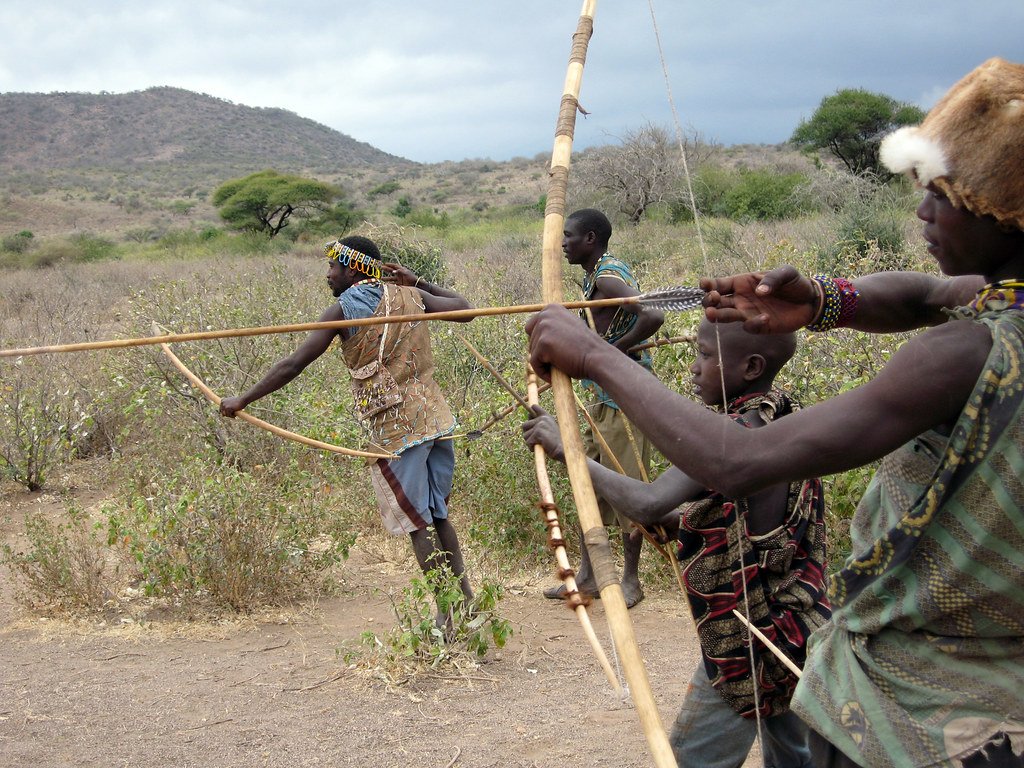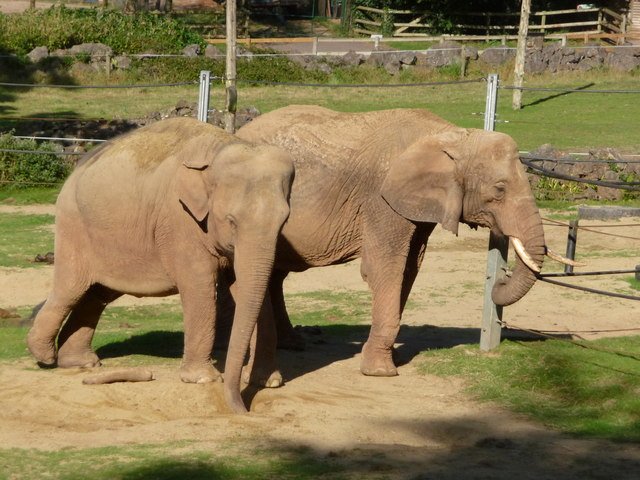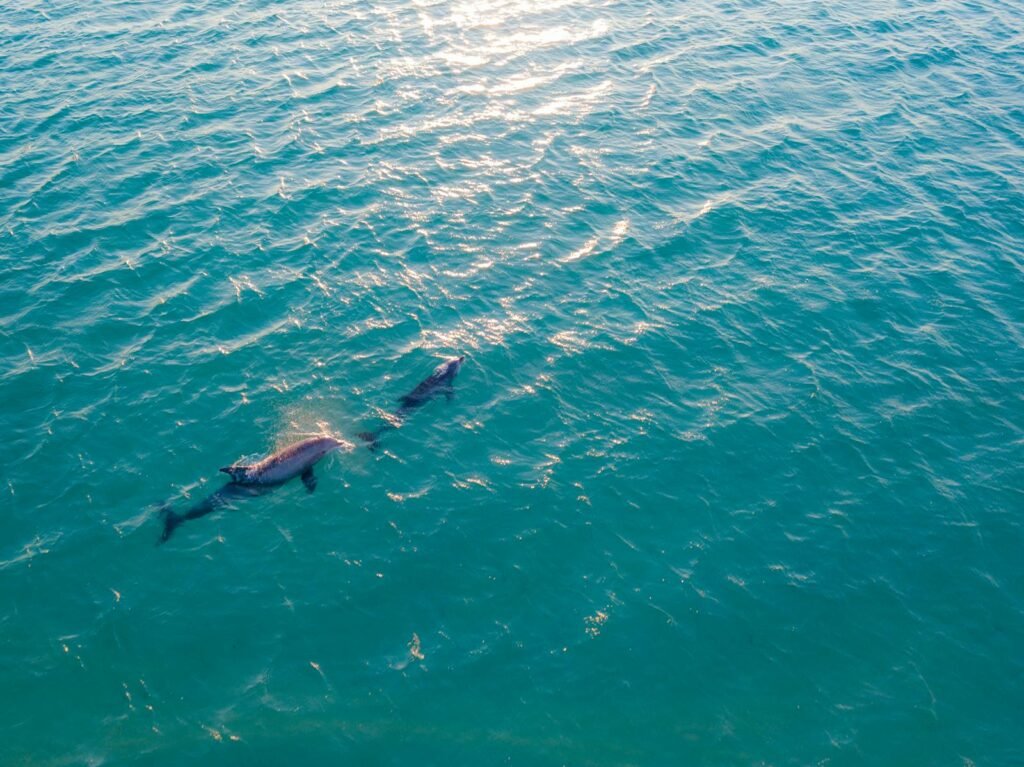Nestled in the rugged landscapes around Lake Eyasi in northern Tanzania lies one of humanity’s most fascinating cultural treasures. The Hadza people, also known as Hadzabe, represent something increasingly rare in our modern world. They offer you a glimpse into how our ancestors lived for thousands of years, maintaining traditions that predate agriculture itself.
According to their own history, which they preserve through oral tradition, the Hadza have lived in their current environment bordering the Serengeti plains since their first days as a unique group. Genetically, the Hadza show one of the oldest lineages of contemporary humans. This small community of roughly one thousand people has managed to preserve a way of life that connects them directly to humanity’s deepest roots. Their story challenges everything you think you know about progress, happiness, and what it truly means to live in harmony with nature.
What makes the Hadza truly extraordinary isn’t just their ancient lifestyle, but their remarkable resilience in the face of a rapidly changing world. Let’s explore the fascinating facts that make this tribe one of the most unique cultures on Earth.
They Are Among the Last True Hunter-Gatherers on Earth
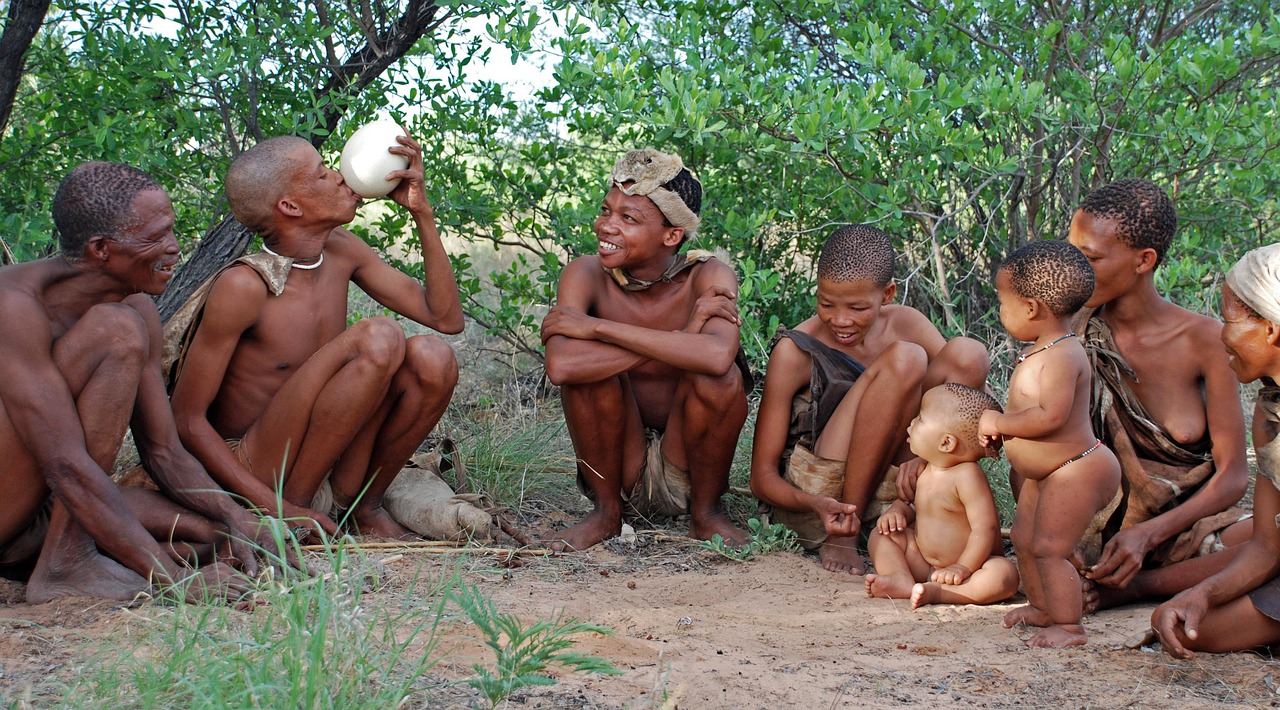
Found in small communities, dotted around the Serengeti Plateau and Lake Eyasi in Tanzania, the Hadza people are a group of under 1000 people deemed to be the last real hunter-gathers on earth. Despite outside interference and attempts, over the last two centuries, to introduce agriculture and Christianity to the Hadza, the majority continue to live in a traditional way, without fixed abode, crops, calendars or many belongings, as they live the life our distant ancestors once lived, all the way into the 21st century.
As a hunter-gatherer society, the Hadza have no domesticated livestock, nor do they grow or store their own food. The Hadza survive by hunting their food with hand-made bows and arrows and foraging for edible plants. Of this total, approximately 300 are nomadic and live a hunting and gathering lifestyle, collecting over 90% of the food that they consume.
This lifestyle represents something you rarely see today: complete self-sufficiency without modern conveniences. Every meal depends on their skills, knowledge, and the generosity of their environment.
Their Language is Completely Unique in the World
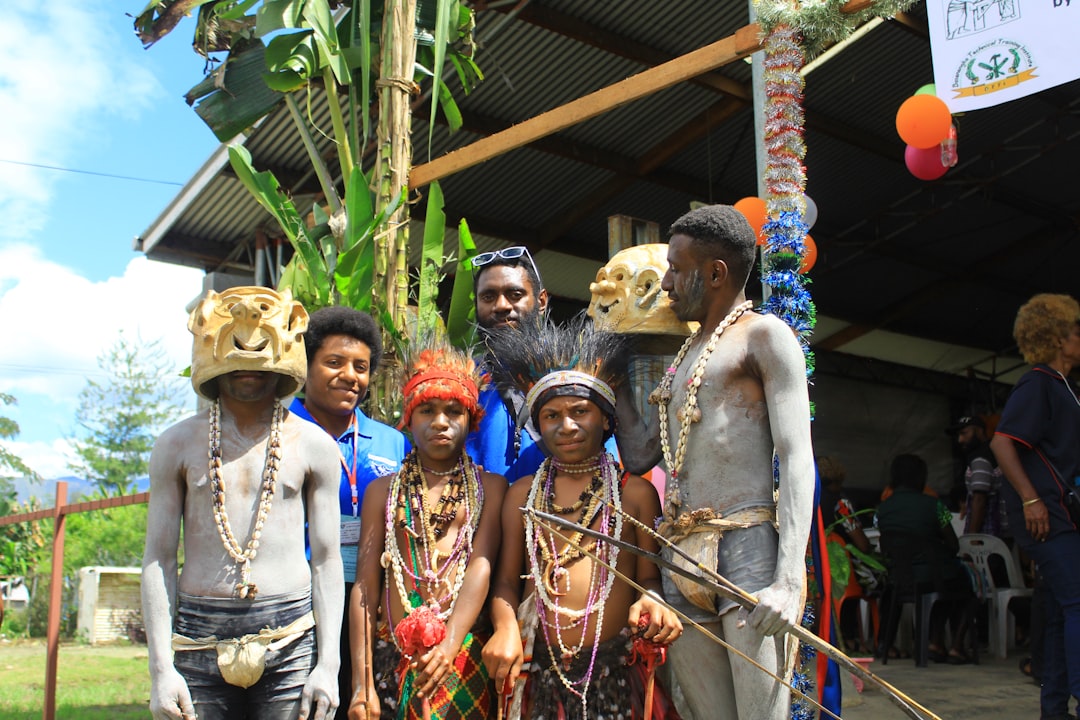
Once classified among the Khoisan languages primarily because it has clicks, the Hadza language (Hadzane) is now thought to be an isolate, unrelated to any other language. Hadzane is an entirely oral language. Of those, about 80,000 speak a San language, 40,000 speak Sandawe, and less than 800 speak Hadza. Both Sandawe and Hadza are languages isolates and therefore a conservation priority.
The language of the Hadza, called Hadzane, is traditionally classified as a Khoisan language because it contains clicks. Hadzane has three variants of click consonants: dental, alveopalatal, and lateral. When you hear them speak, you’ll notice these distinctive clicking sounds that make their conversations sound unlike anything else in the world.
Hadzane fluency is also considered the most important factor in distinguishing whether someone is Hadza. This means their language isn’t just a form of communication but a key marker of cultural identity.
They Have No Chiefs, Leaders, or Social Hierarchy
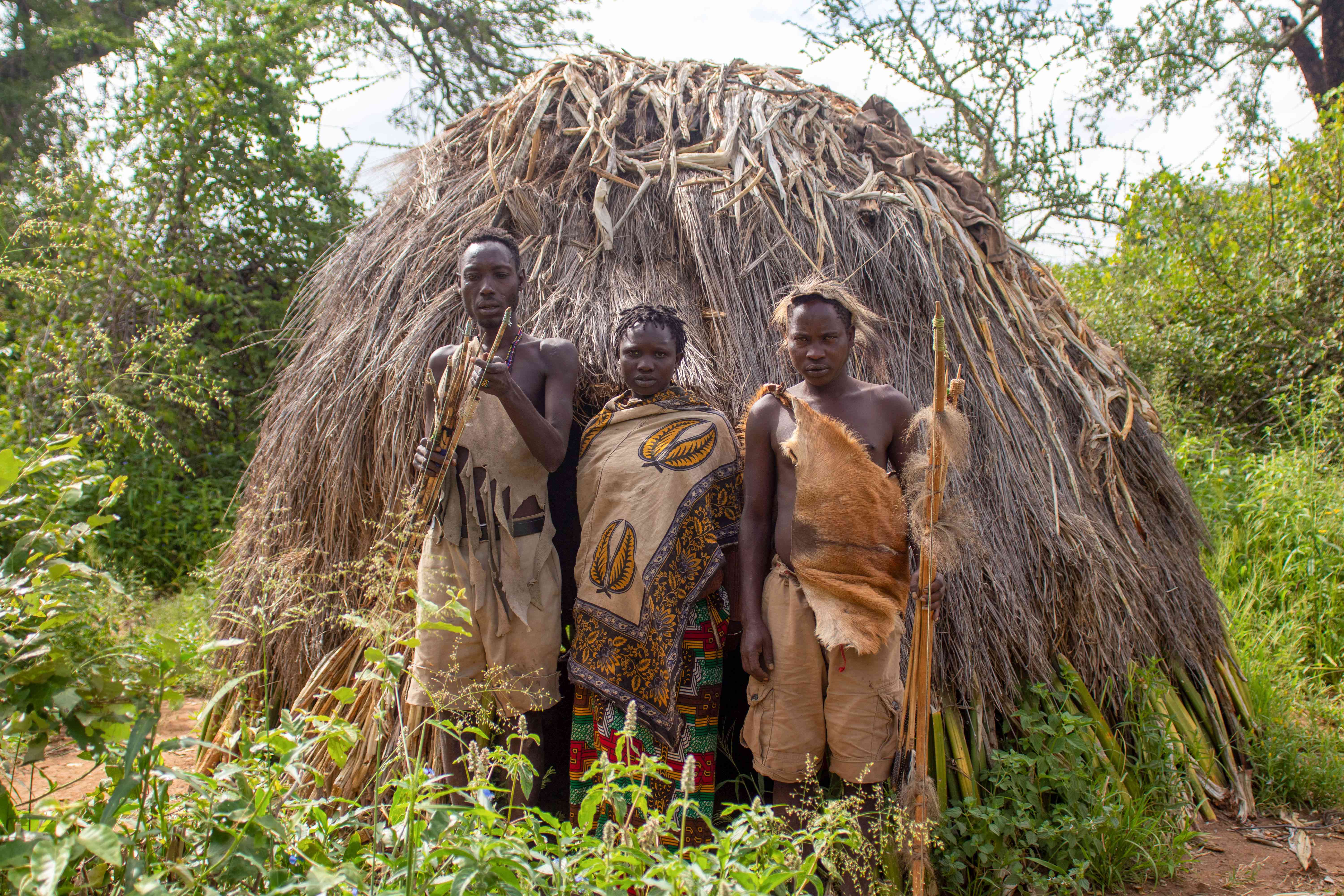
The Hadza recognize no official leaders. Camps are traditionally named after a senior male (hence, Onwas’s camp), but this honor does not confer any particular power. Individual autonomy is the hallmark of the Hadza. No Hadza adult has authority over any other.
Living in groups of 20-30 people, except for in berry season, where multiple groups will join up in the hunt for berries, the Hadza people have no governing hierarchy with conflict mainly being solved personally or by the offending party moving to a different group, voluntarily. This creates a society where you would find remarkable personal freedom and equality.
Like almost all other hunter-gatherer groups, the Hadza have an egalitarian social structure. There is no political structure, formal or informal, at the tribal level. Society is typically organised in camps, which have fluid composition of extended family and friends.
Women Enjoy Remarkable Equality and Autonomy
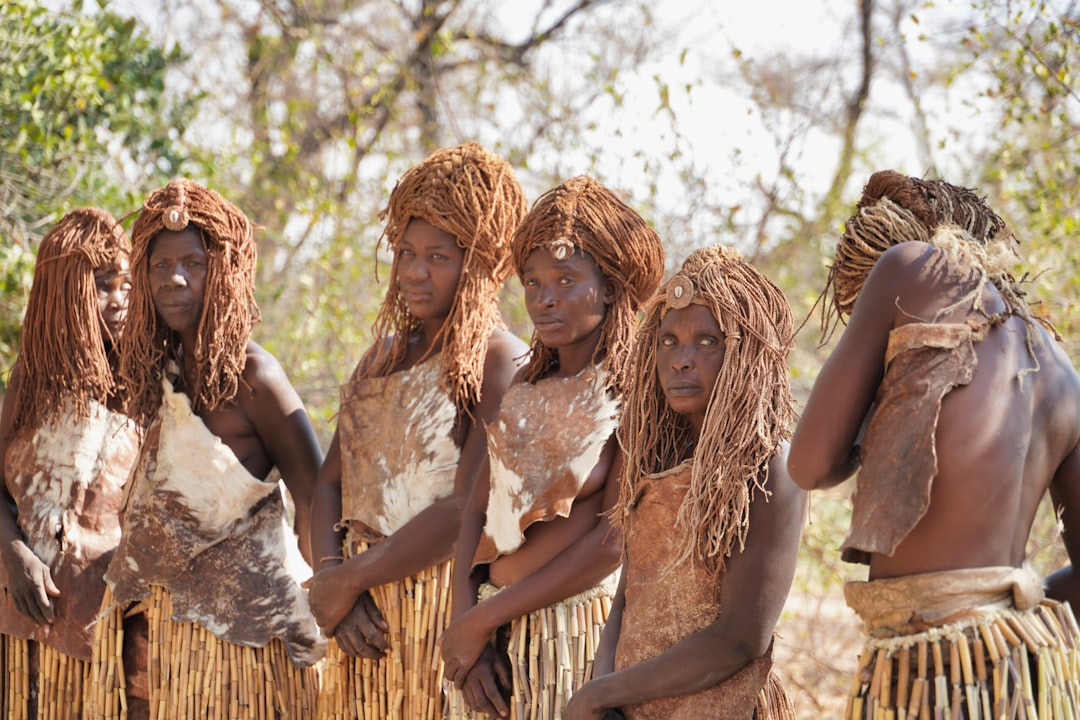
Gender roles are distinct, but for women there is none of the forced subservience knit into many other cultures. A significant number of Hadza women who marry out of the group soon return, unwilling to accept bullying treatment.
Hadza women have a great amount of autonomy and participate equally in decision-making with men. One of the unique aspects of Hadzabe culture is the role of women. Unlike many traditional societies, Hadzabe women are equal partners in the search for food and play a central role in the tribe’s decision-making process.
This gender equality extends to their work patterns too. While men typically hunt and women gather, both contributions are valued equally, and neither gender dominates the other in social situations.
Their Hunting Skills Are Extraordinary and Scientific
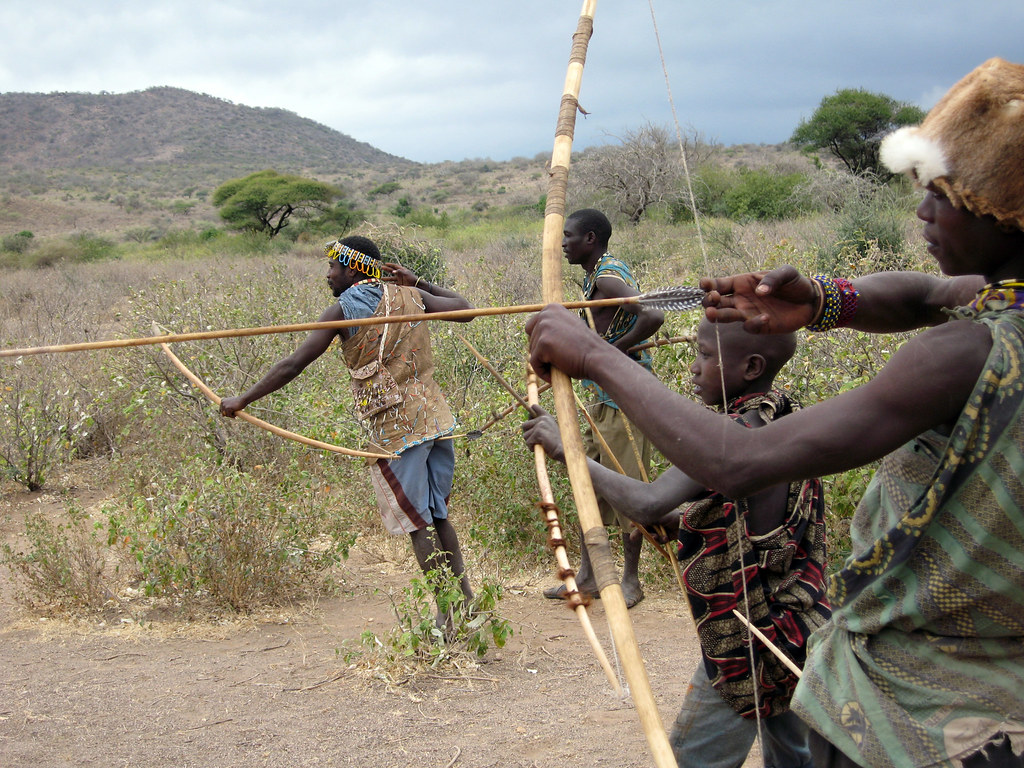
Hadza bows were powerful (311 N draw weight) and efficient (71% energy transfer). Arrow velocity (45.1 ± 7.0 m/s− 1) and estimated kinetic energy (36.9 ± 13.4 J) were greater than typically employed in experimental archeology studies. Draw forces (311 ± 98 N) were also greater, equivalent to ~ 70% of men’s body weight.
He brings an ax to extract honeycomb from tree trunks and a bow and arrows for hunting and defense. On their arrowheads, the Hadzabe use poison that they extract from the branches of the shrub Adenium coetaneum. On their arrowheads, the Hadzabe use poison that they extract from the branches of the shrub Adenium coetaneum.
The primary hunting weapons of Hadzabe are bows and arrows. Hadzabe people are neither setting snares nor traps. The most important hunting technique for remotely living Hadza people is ambush hunting. Their accuracy and skill would impress even modern archers.
They Live Without Money, Possessions, or Material Wealth

None has more wealth; or, rather, they all have no wealth. There are few social obligations – no birthdays, no religious holidays, no anniversaries. Known for shunning material possessions and social hierarchy, the Hadza roam as needed to find game, tubers and wild berries.
The Hadza have very little accumulated wealth and most do not participate in a market economy. The Hadza have very little accumulated wealth and most do not participate in a market economy. When you see how they live, you’ll realize they have found happiness without the constant pursuit of material goods that drives much of modern society.
They do not value money or most material possessions, but gladly accept other gifts, including alcohol. They do not value money or most material possessions, but gladly accept other gifts, including alcohol.
Marriage is Informal and Flexible
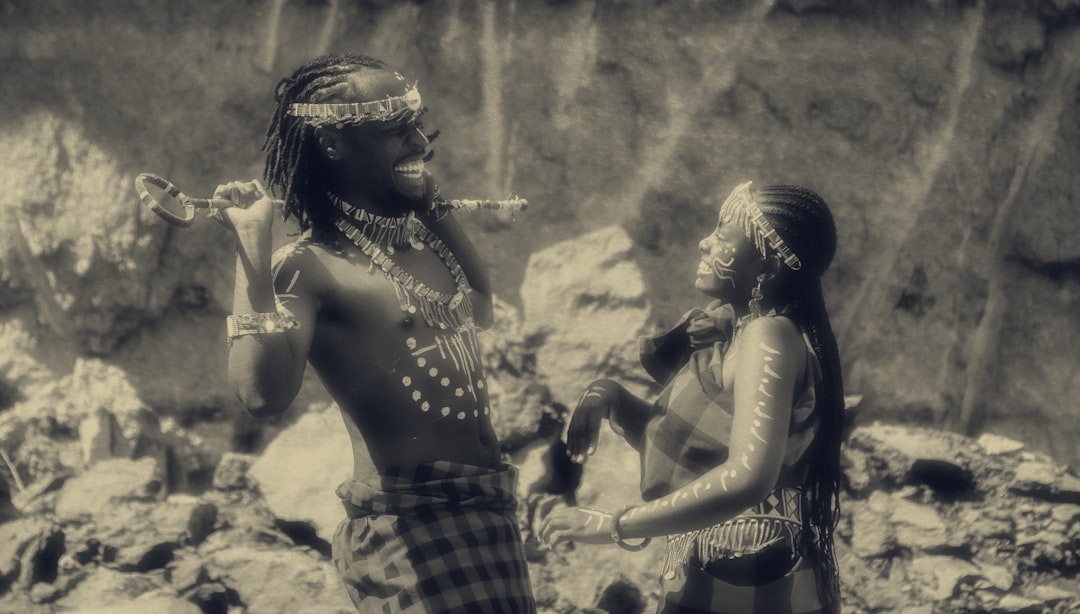
There are no wedding ceremonies. A couple that sleeps at the same fire for a while may eventually refer to themselves as married. Most of the Hadza I met, men and women alike, were serial monogamists, changing spouses every few years.
The Hadza are predominantly monogamous, though there is no social enforcement of monogamy. After marriage, the husband and wife are free to live where they decide, which may be with the father or mother’s family. This marital residence pattern is called ambilocality and is common among foragers.
Usually courting begins with a boy sending a go-between, such as his sister, to let the girl know he likes her. If he receives a positive response, they will sneak off at night for a sexual rendezvous. If they like each other enough, they begin living together and are then considered married.
They Face Serious Threats to Their Survival

Contemporary settlements and farming practices currently threaten the lifestyle of the Hadza. They have lost between 75 percent and 90 percent of their land over the past 50 years. In 2007, the local government controlling the Hadza lands adjacent to the Yaeda Valley leased the entire 6,500 square kilometres (2,500 sq mi) of land to the Al Nahyan royal family of the United Arab Emirates for use as a “personal safari playground”. Both the Hadza and Datooga were evicted, with some Hadza resisters imprisoned. However, after protests from the Hadza and negative coverage in the international press, the deal was rescinded.
Money given directly to Hadzabe also contributes to alcoholism, and deaths from alcohol poisoning have recently become a severe problem, further contributing to the loss of cultural knowledge. Modernization brings both opportunities and devastating challenges for their traditional way of life.
Today, however, land use issues and cultural diffusion present more of a challenge to the future of the Hadza people and their language than ever before. The Hadzabe’s land has been decreased dramatically in the past 60 years.
They Have Survived All Attempts at Forced Settlement

The British colonial government tried to make the Hadza settle down and adopt farming in 1927, the first of many such government efforts. The British tried again in 1939, the independent Tanzanian government tried in 1965 and 1990, and various foreign missionary groups have tried the same since the 1960s. These numerous attempts, some forceful, have largely failed. Generally, the Hadza willingly settle as long as provided food stocks last, then leave and resume their traditional hunter-gatherer lives when the provisions run out; few have adopted farming for sustenance.
The third attempt, made by the Tanzanian government in 1965, was the most ambitious and involved the Hadza being ‘escorted’ by armed guards to a village settlement where a school and clinic had been built by missionaries. Many Hadza died after only a few short weeks of settlement, presumably due to increased disease transmission, particularly respiratory infections and measles. The remaining Hadza left the settlement soon after.
Their resistance to forced change demonstrates not stubbornness, but a deep understanding that their traditional lifestyle works for them in ways that settled life cannot replace.
They May Hold Keys to Human Health and Longevity

The Hadza do not suffer from malnutrition and are, in fact, healthier than neighbouring tribes. Surprisingly, yes, they appear to be healthier than many city dwellers in several ways. Scientists have noticed that the lifestyle of African hunters and gatherers helps them stay healthier longer. Now they are trying to figure out how to use this to improve the quality of life for modern urban dwellers.
They are the only people allowed to hunt animals in the Serengeti and recent studies have suggested that the Hadza way of life might hold the key to good health! Due to their hunter-gather diet and the variety and seasonality of the foods they consume, Hadza people have fascinated scientists and doctors who have discovered that they have a variety of rare health-promoting microbes in their body, that a
Their diet and lifestyle patterns offer valuable insights into human nutrition and physical fitness that could benefit people worldwide.
Their Future Depends on Land Rights Protection
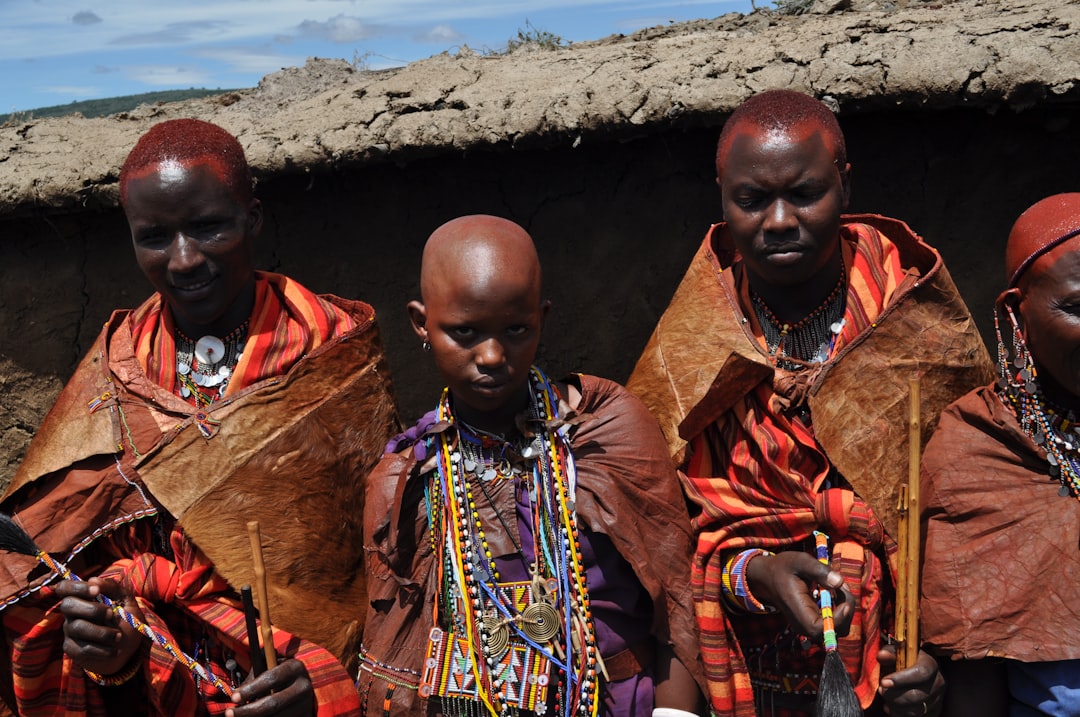
In October 2011, the Hadza took the innovative step of asserting legal claim to their homeland with a CCRO. They received official title – recognized by the government of Tanzania – to 57,000 acres. Working with Carbon Tanzania and other NTRI partners, the Hadza established a mechanism that pays them for protecting their traditional forests. They’ve since earned more than $300,000, which has gone toward paying school fees for dozens of students, training rangers to monitor the community’s land and its wildlife, and improving health clinics.
Now, the Northern Tanzania Rangelands Initiative, a coalition of 10 NGOs working to create a thriving landscape where people and wildlife co-exist, has helped secure more than 1.2 million acres of land for communities like the Hadza. These conservation efforts represent hope for preserving both their culture and Tanzania’s precious ecosystems.
And for this reason, the Hadza’s Yaeda Valley Project is a recipient of the 2019 Equator Prize, one of the United Nation’s most prestigious awards for environmental protection and climate resilience.
The Hadza people represent far more than an anthropological curiosity. They offer you a window into humanity’s past and potentially valuable insights for our future. Their egalitarian society, sustainable lifestyle, and deep environmental knowledge challenge many assumptions about progress and development.
Yet their story also serves as a reminder of what we stand to lose. Isolated through their remarkably steadfast tradition, they have changed little in 10,000 years. In our rapidly changing world, the Hadza demonstrate that there are different ways to live, different definitions of success, and different relationships with the natural world that surrounds us.
What can you learn from a people who have thrived for millennia without accumulating wealth, building cities, or developing complex technologies? Perhaps the answer lies in their profound understanding that happiness doesn’t require conquest of nature, but harmony with it. What do you think we could gain by protecting and learning from cultures like the Hadza?

